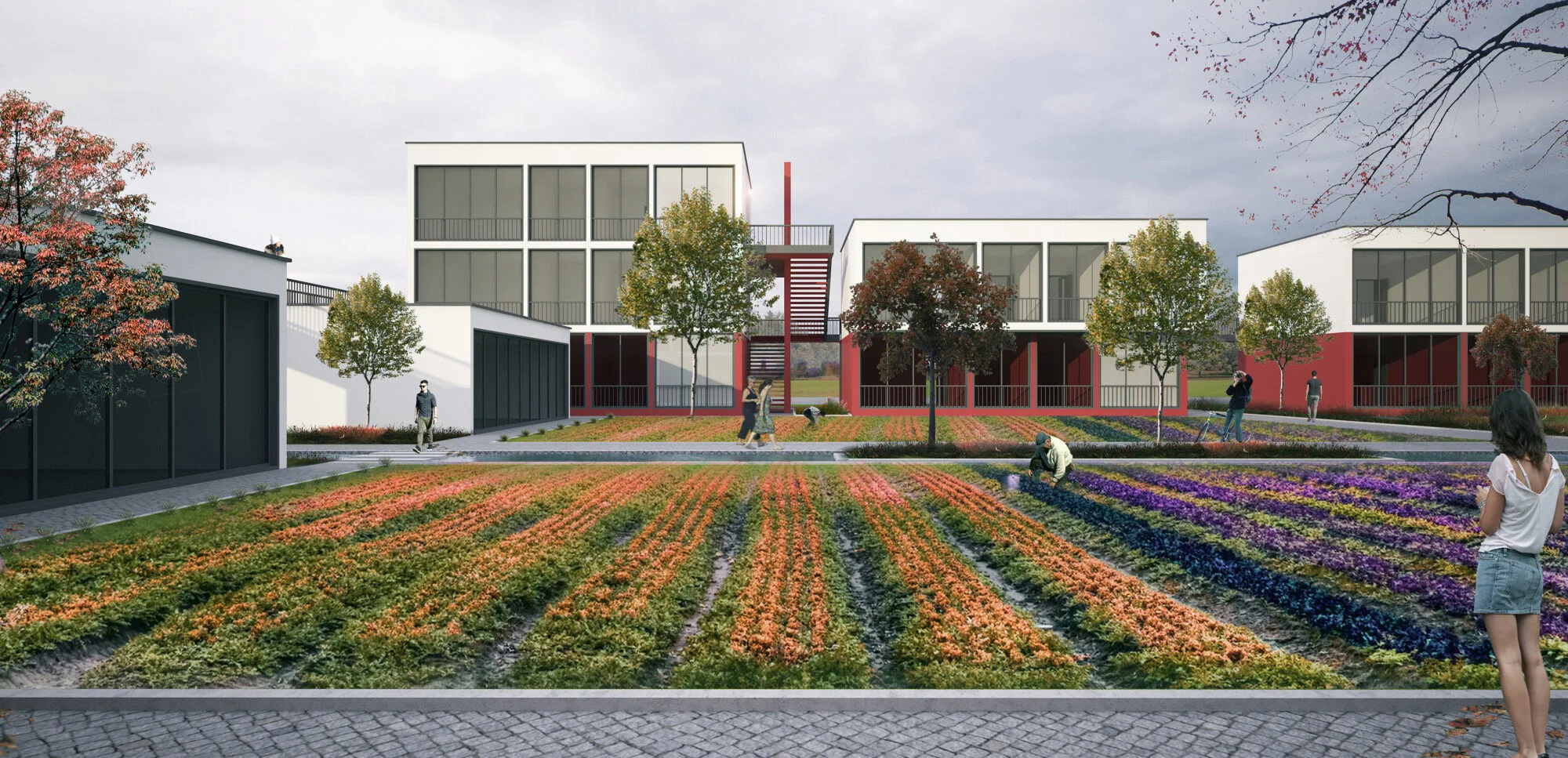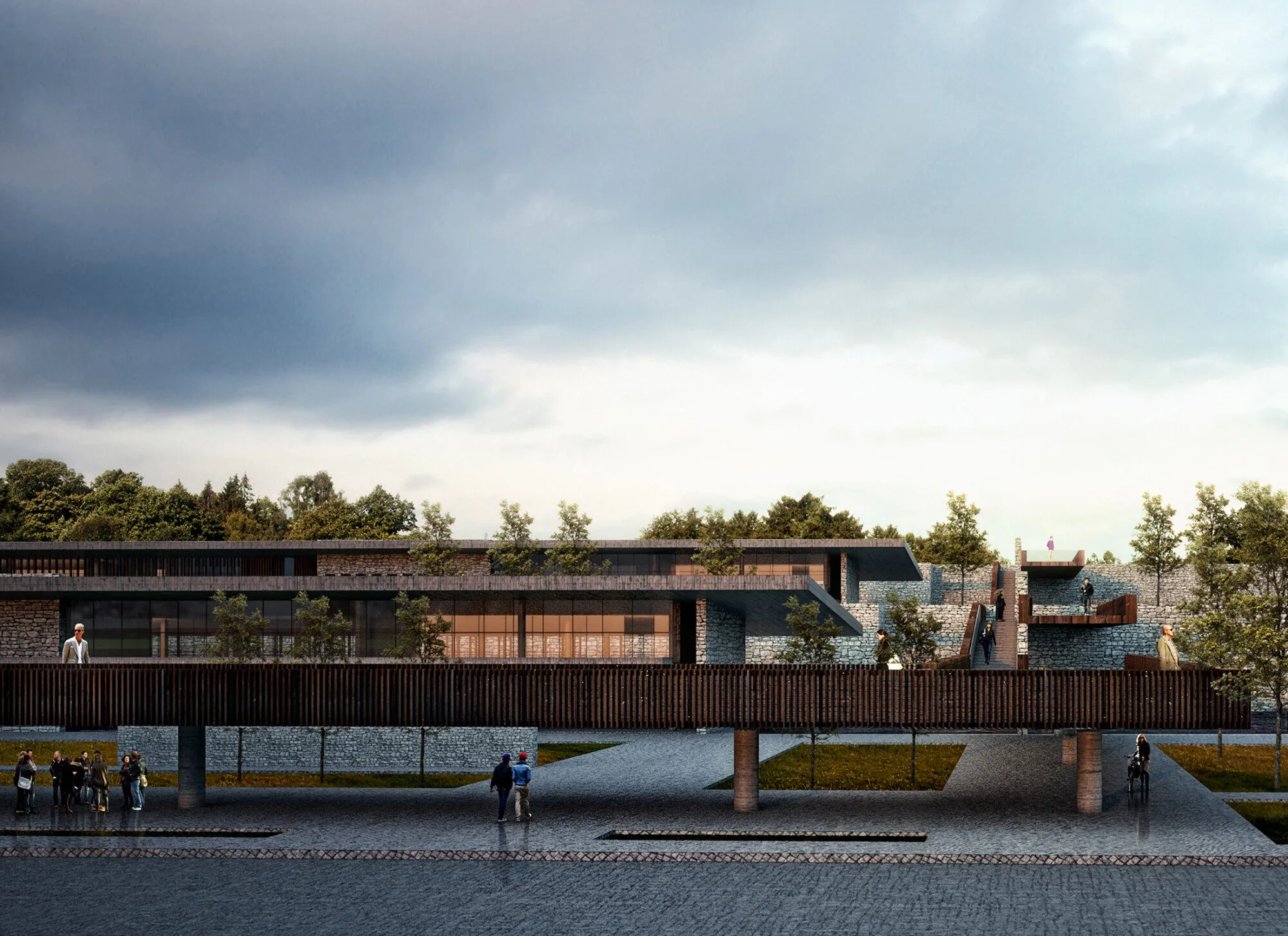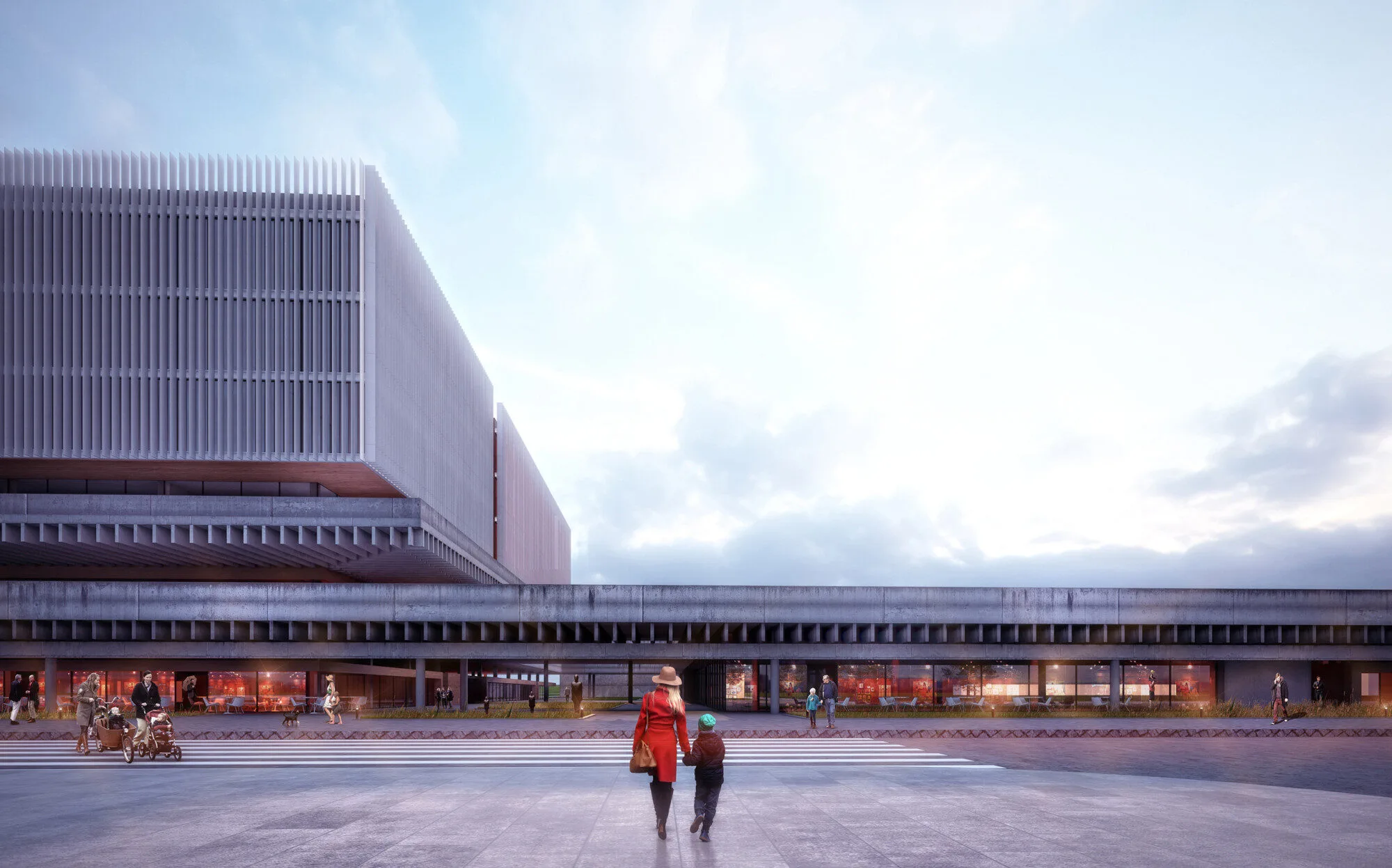
Tekirdağ Metropolitan Municipality
Tekirdag Metropolitan Municipality
The design area, located to the northeast of the city center, is divided into two parts by the Tekirdağ-Köse İlyas Village Road. This division is addressed by lowering the road to a lower elevation according to the existing zoning plans. Another significant input is the green belt extending from the city center to the design area, as foreseen by the zoning plan. In accordance with the zoning regulations, which specify the preservation of this green corridor, the block system where commercial buildings are situated has been maintained, while setback distances have been recalibrated with the city park as a reference, and building height criteria have been defined. Furthermore, the site where the Tekirdağ Metropolitan Municipality Service Building is located offers a variety of scenic vistas, enhancing its spatial richness.
Tekirdag Metropolitan Municipality Building
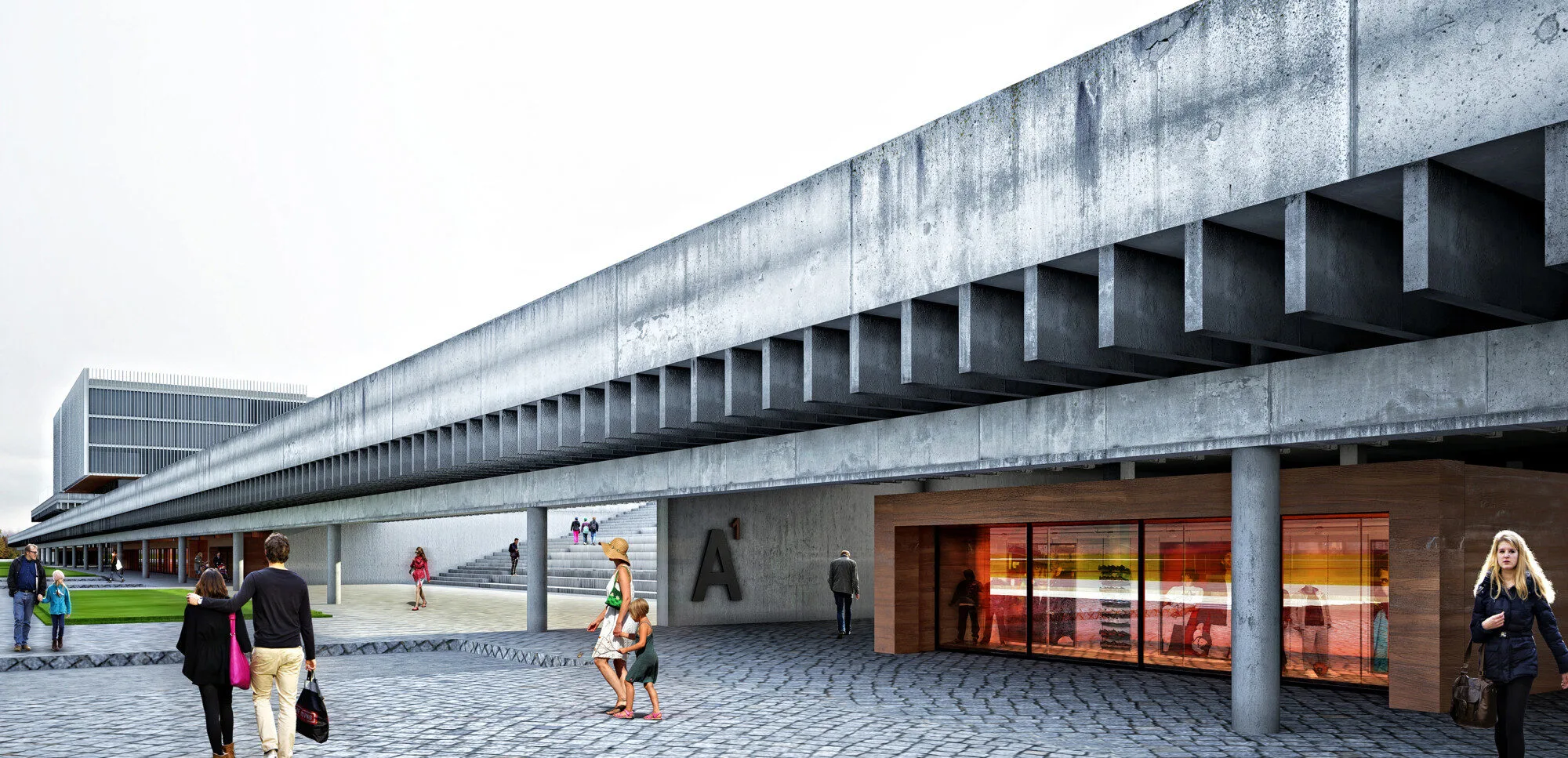
The proposed structure for the Tekirdağ Metropolitan Municipality Service Building accommodates diverse functions as required by the architectural needs program. In addition, the new urban vision for this area seeks to establish it as a new focal point at a macro scale. In this context, public buildings of varying characteristics are arranged sequentially around this focal point, delineating a public pathway. The linear green belt extending from the old city center intersects with this public route, creating the new city square. At the core of this design lies the concept of a continuous and accessible platform where all public buildings and squares are resolved at a single level.
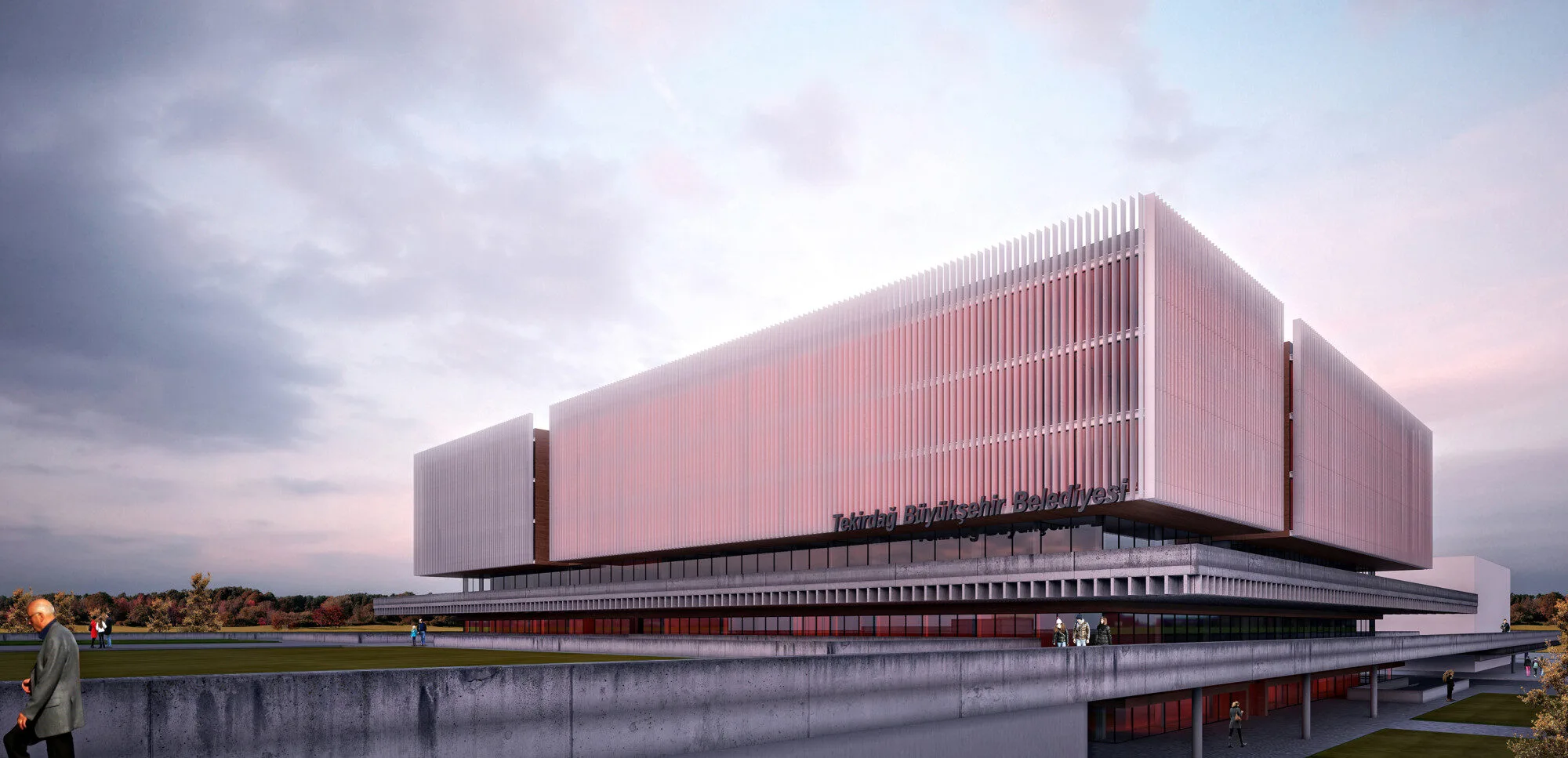
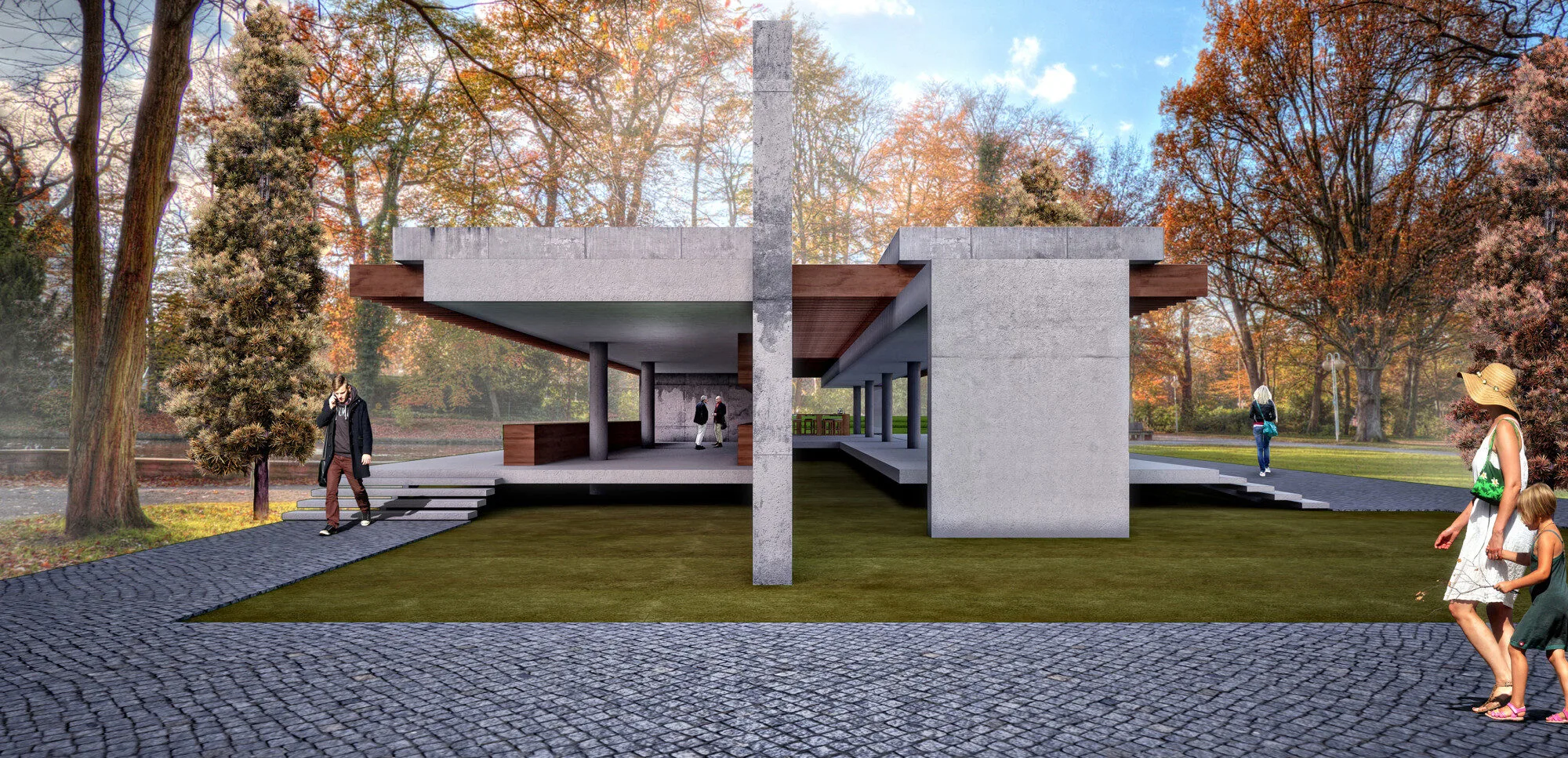
This Public Platform, positioned at the highest point of the gently sloping terrain, defines two distinct usage systems: one for above the platform and one for beneath it. The upper platform organizes public squares, including those for the municipality and government institutions, socio-cultural facilities, public circulation routes, and green recreational areas. The spaces below the platform, created by the natural slope, are filled with underground parking, commercial units, and facilities for the municipal conference center.
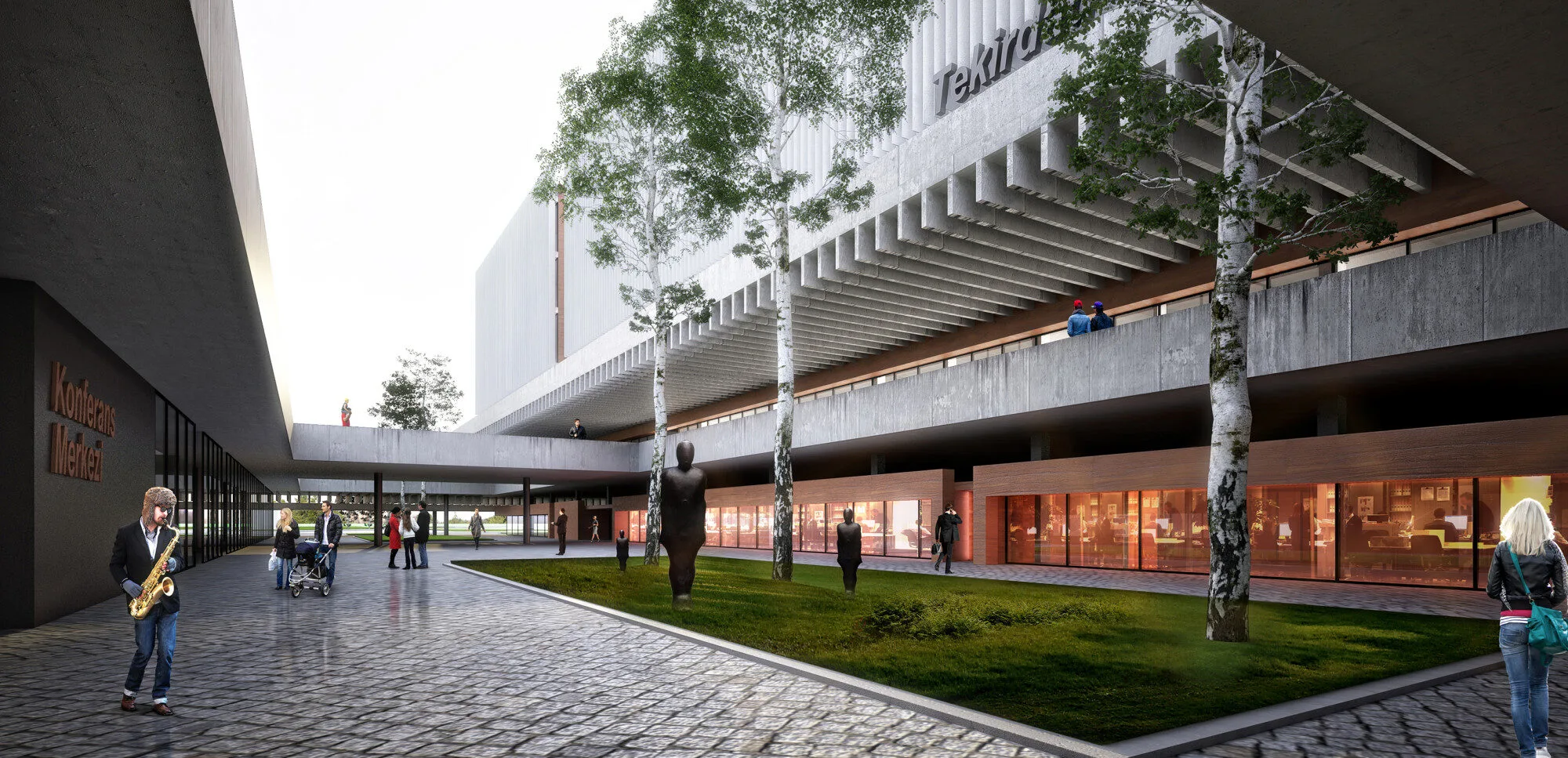
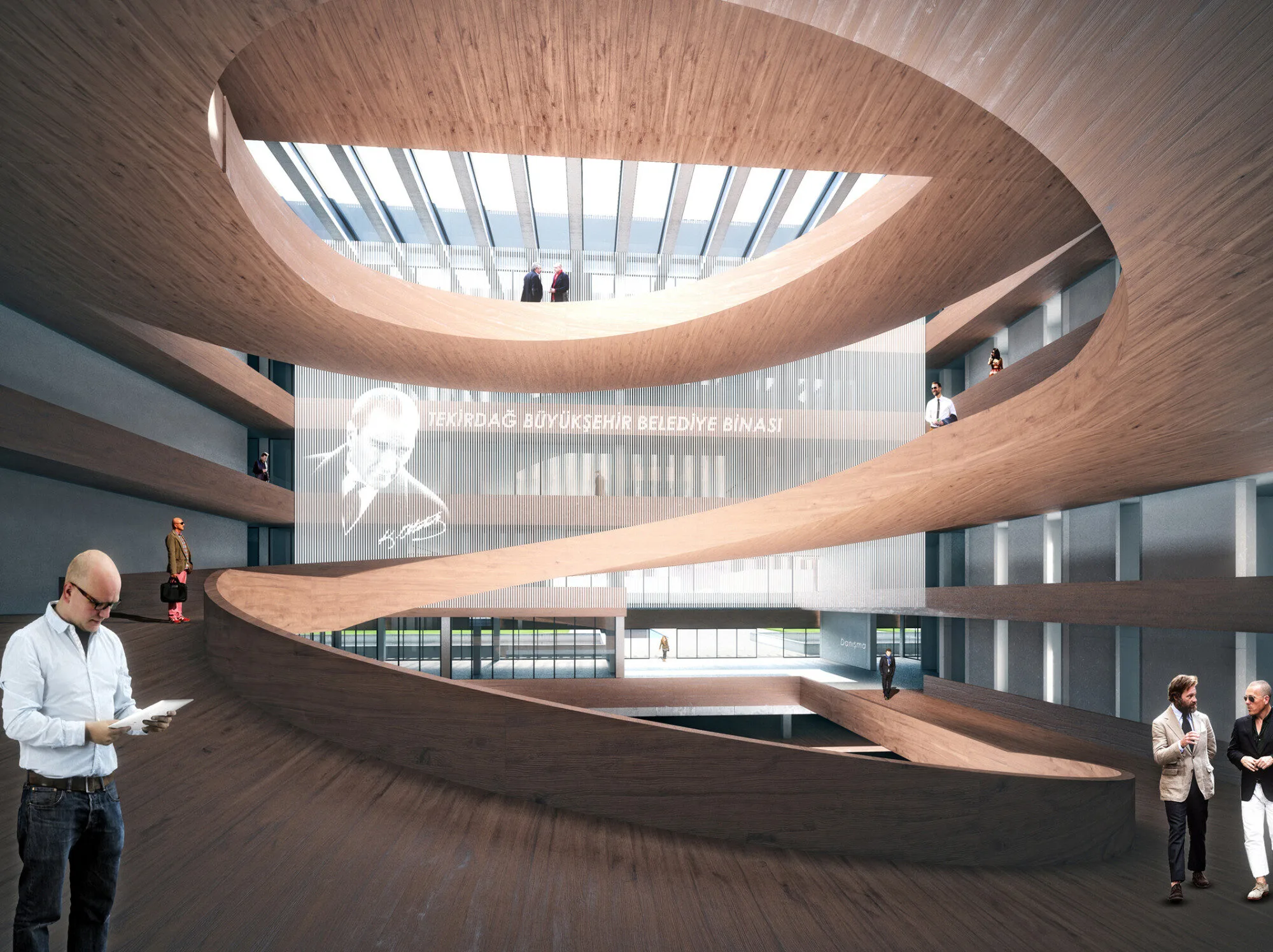
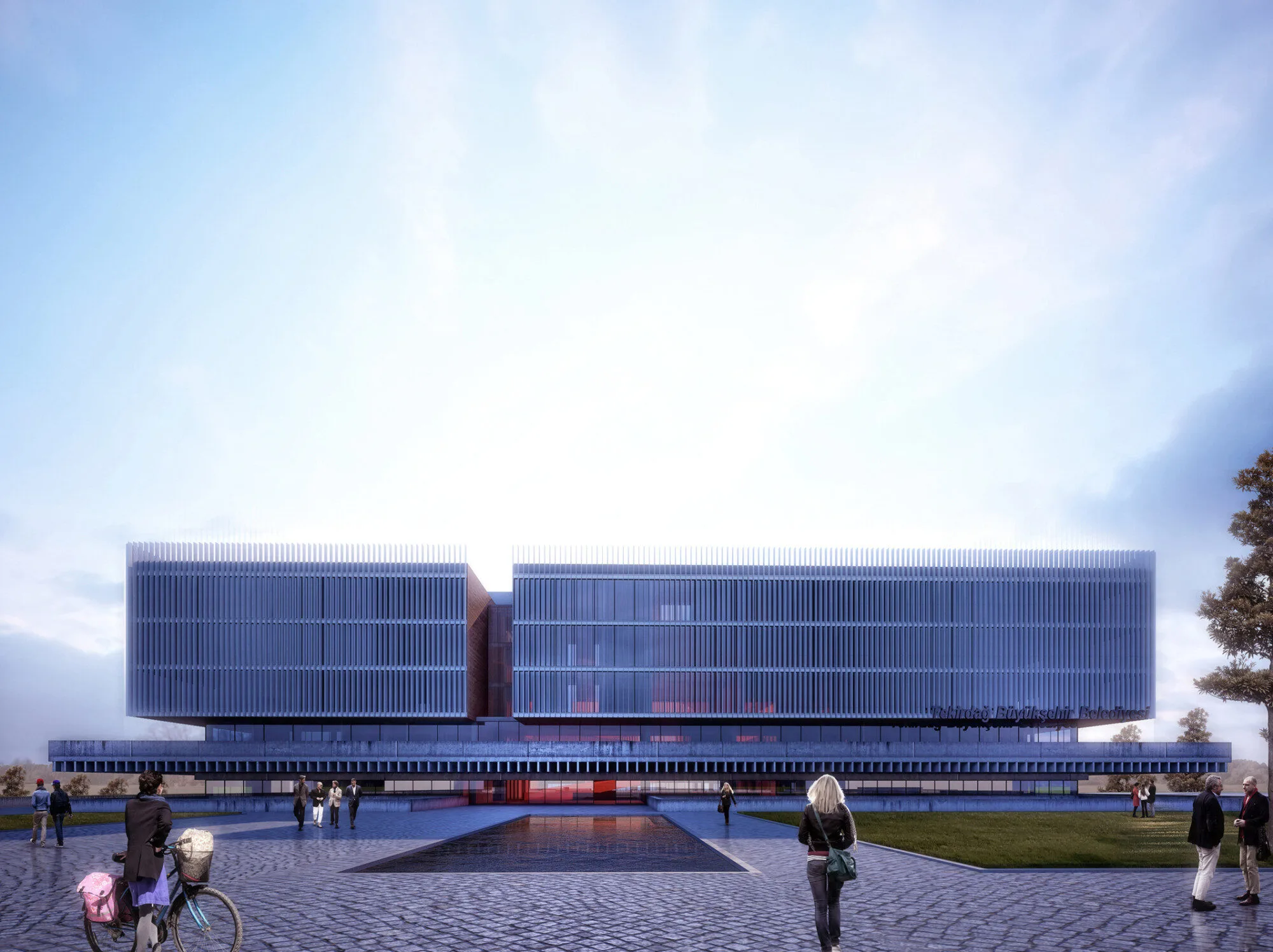
The Service Building and Square, which catalyze civic interaction, are framed by the public platform. This platform channels movements from various points of the city toward the service building. The primary architectural feature directing this flow is an interior volume that is organized in the third dimension. This interior space is not merely defined as a surface, boundary, or floor. Instead, it is a void that envelops the space in three dimensions, functioning independently of conventional architectural elements. This void, designed with Tekirdağ's climatic conditions in mind, is intended to serve as a breathing space for the city's residents, integrating natural ventilation and daylight to enhance the quality of the building's internal functions. These design strategies align with the principles of sustainability, transforming the void into an essential architectural component. Additionally, the circulation of visitors is facilitated through a ramp system, which actively directs movement throughout the building. This system culminates at the municipal council, symbolizing the meeting of the governing and the governed on the same platform, embodying principles of transparent governance.
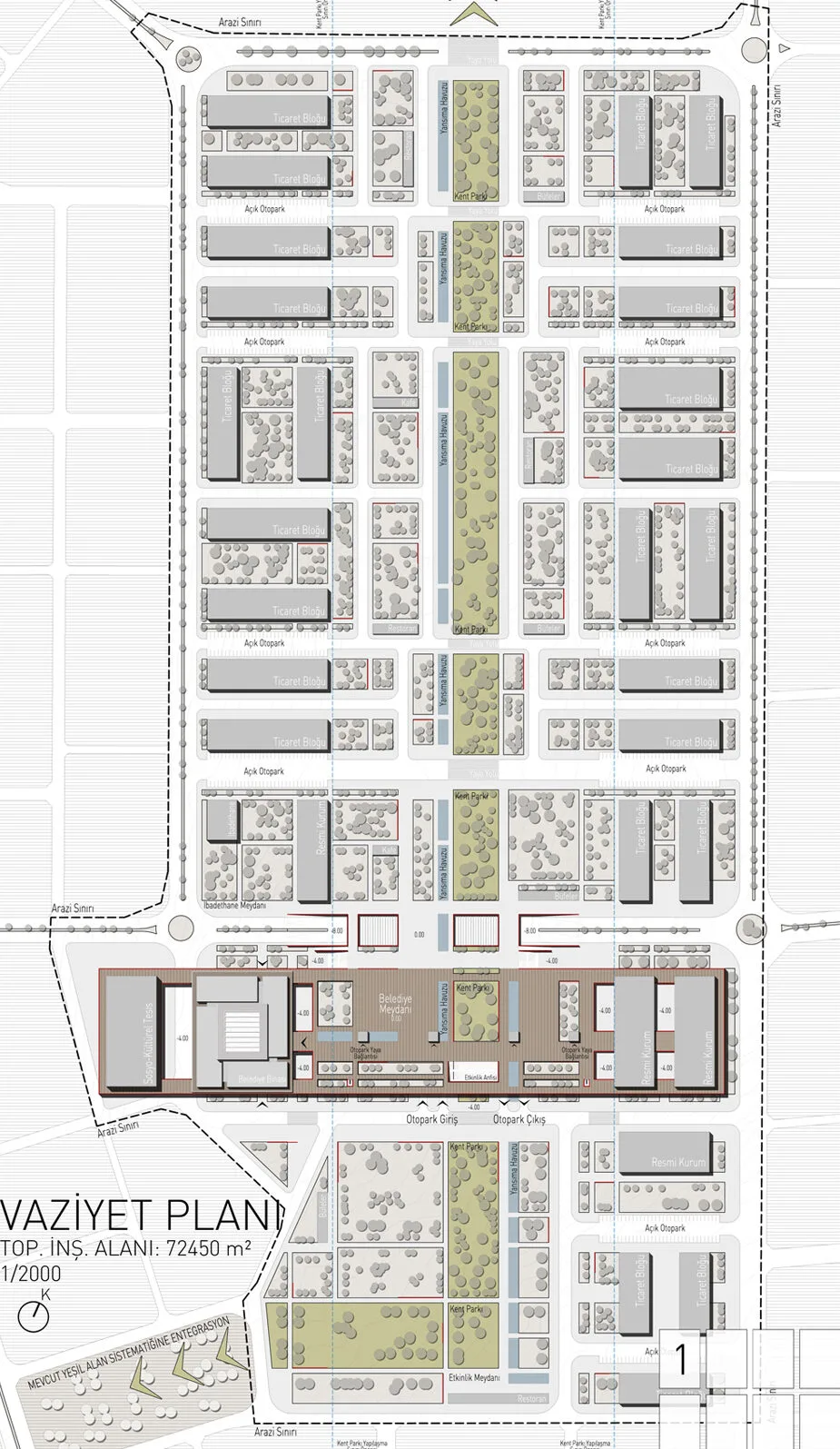
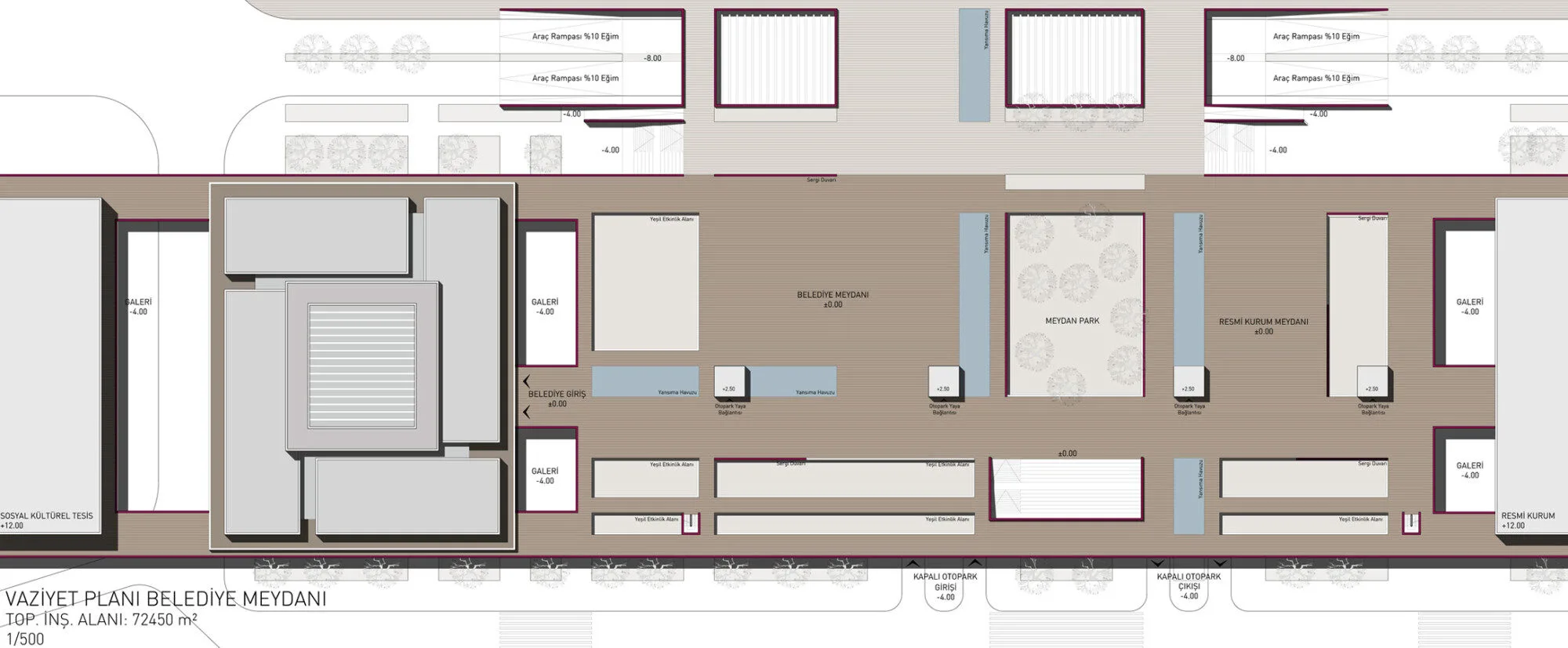
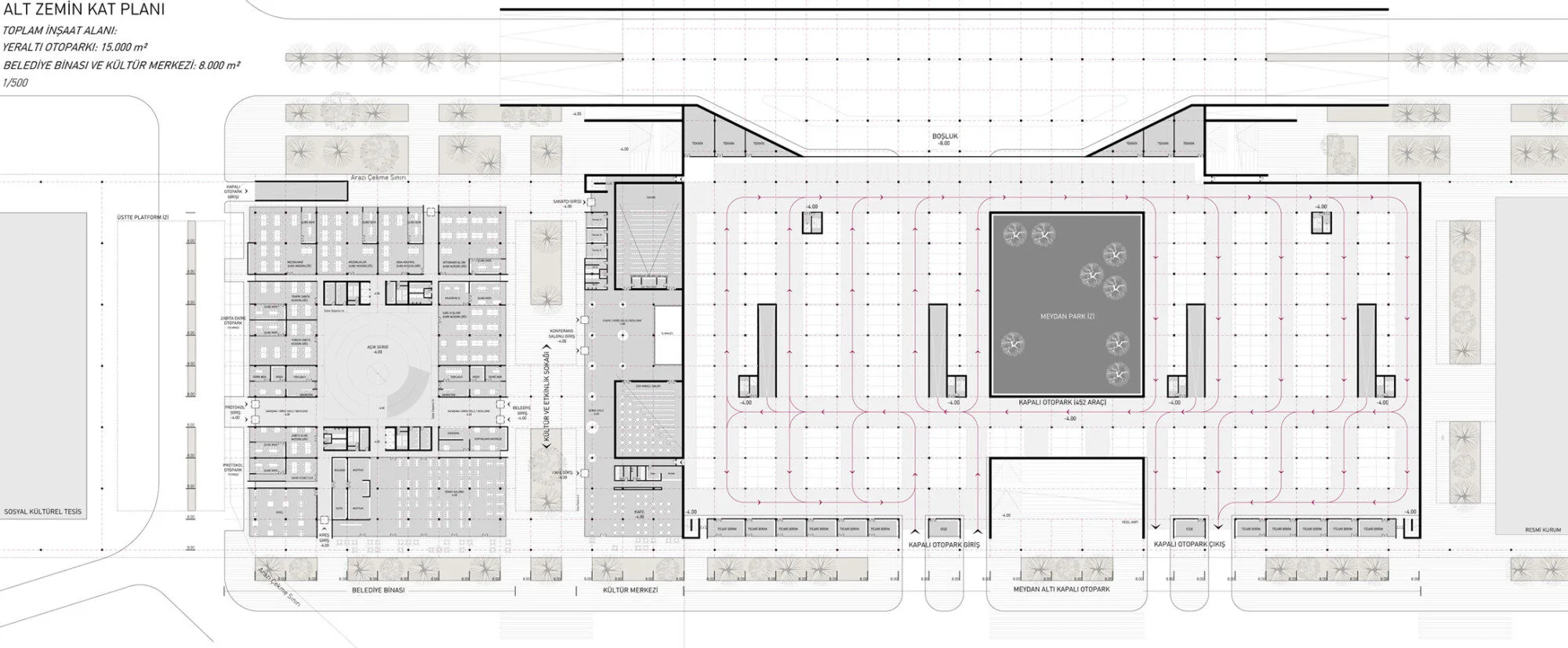
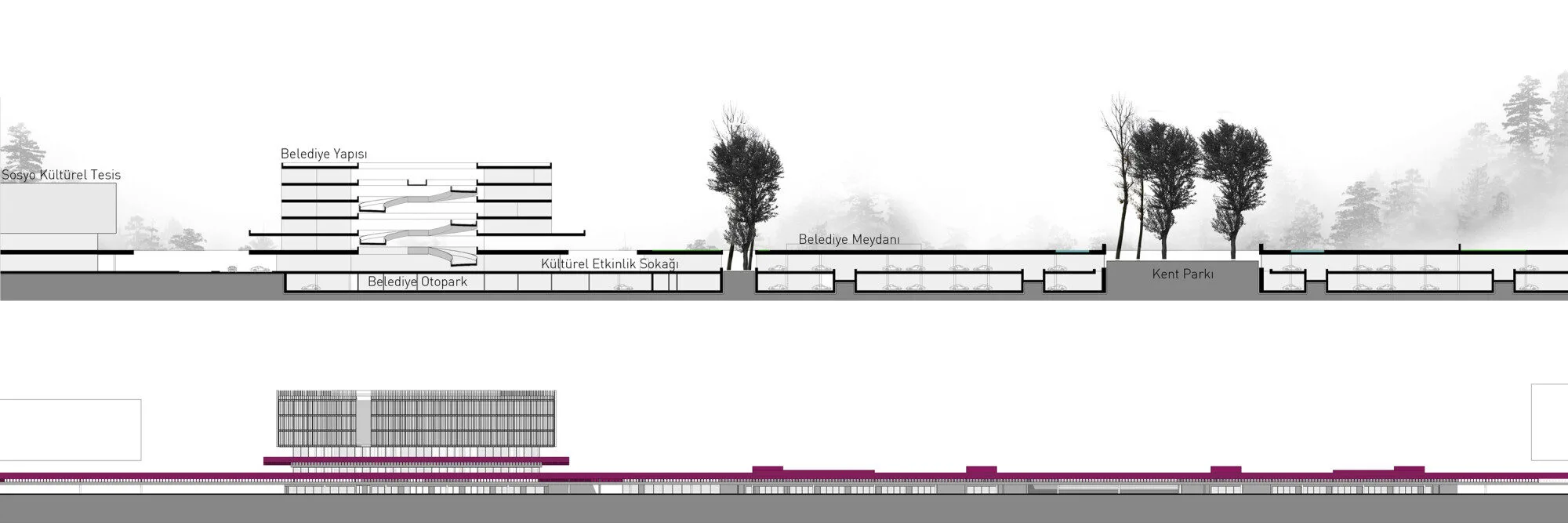
Another key architectural factor shaping the design is the grouping of branches and directorates with similar functional characteristics into four main clusters within a single mass. This approach reduces the overall building bulk, avoiding the heavy imagery often associated with public structures. Furthermore, facilities such as the conference hall, dining hall, and exhibition spaces, organized beneath the platform, are conceptualized as a part of the cultural complex, distinct from the service building but connected through the platform.
